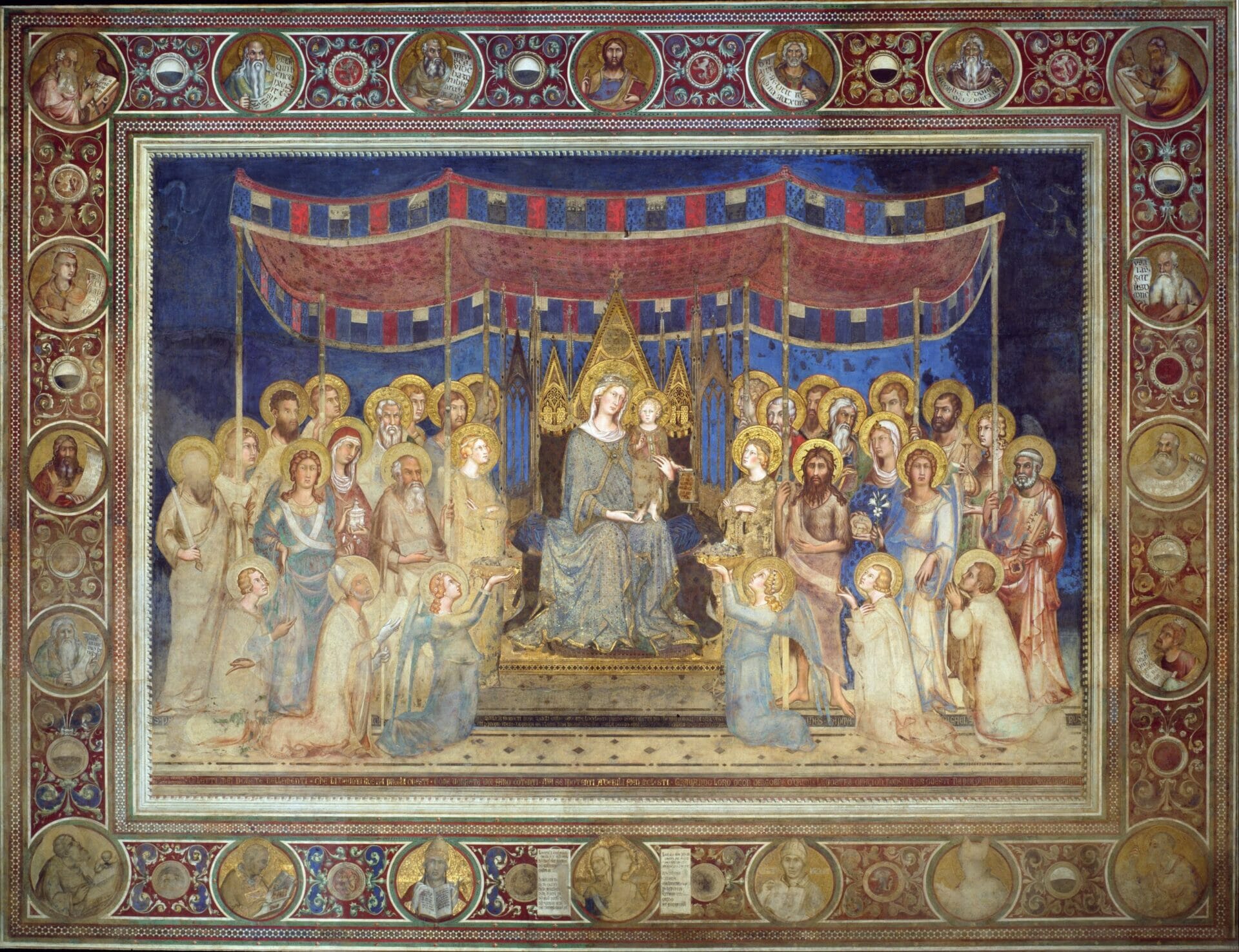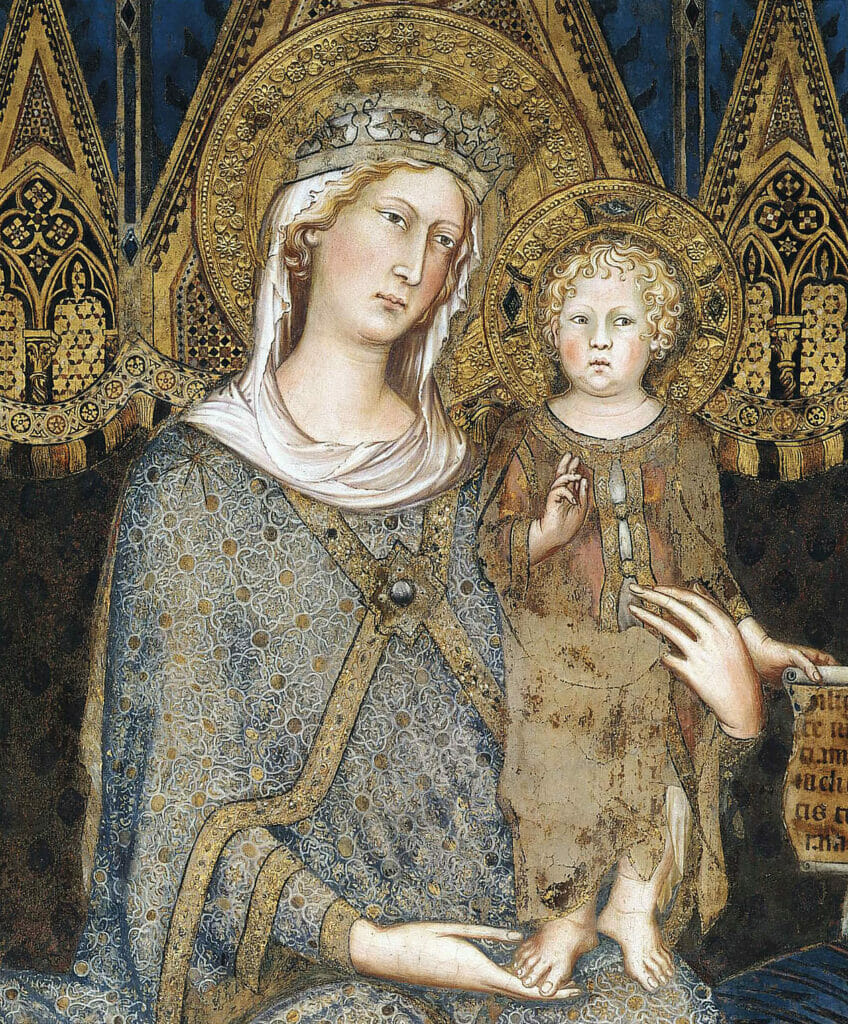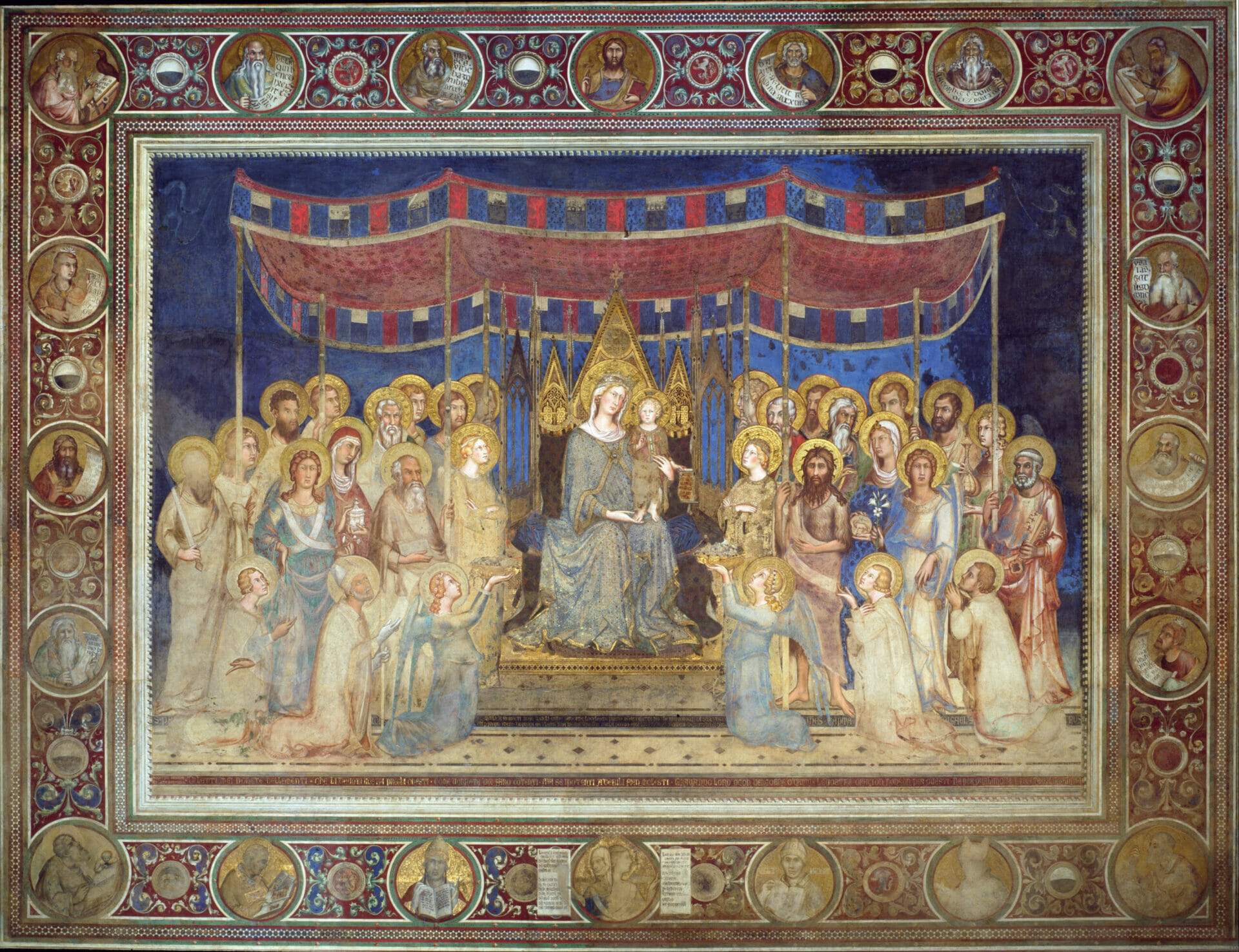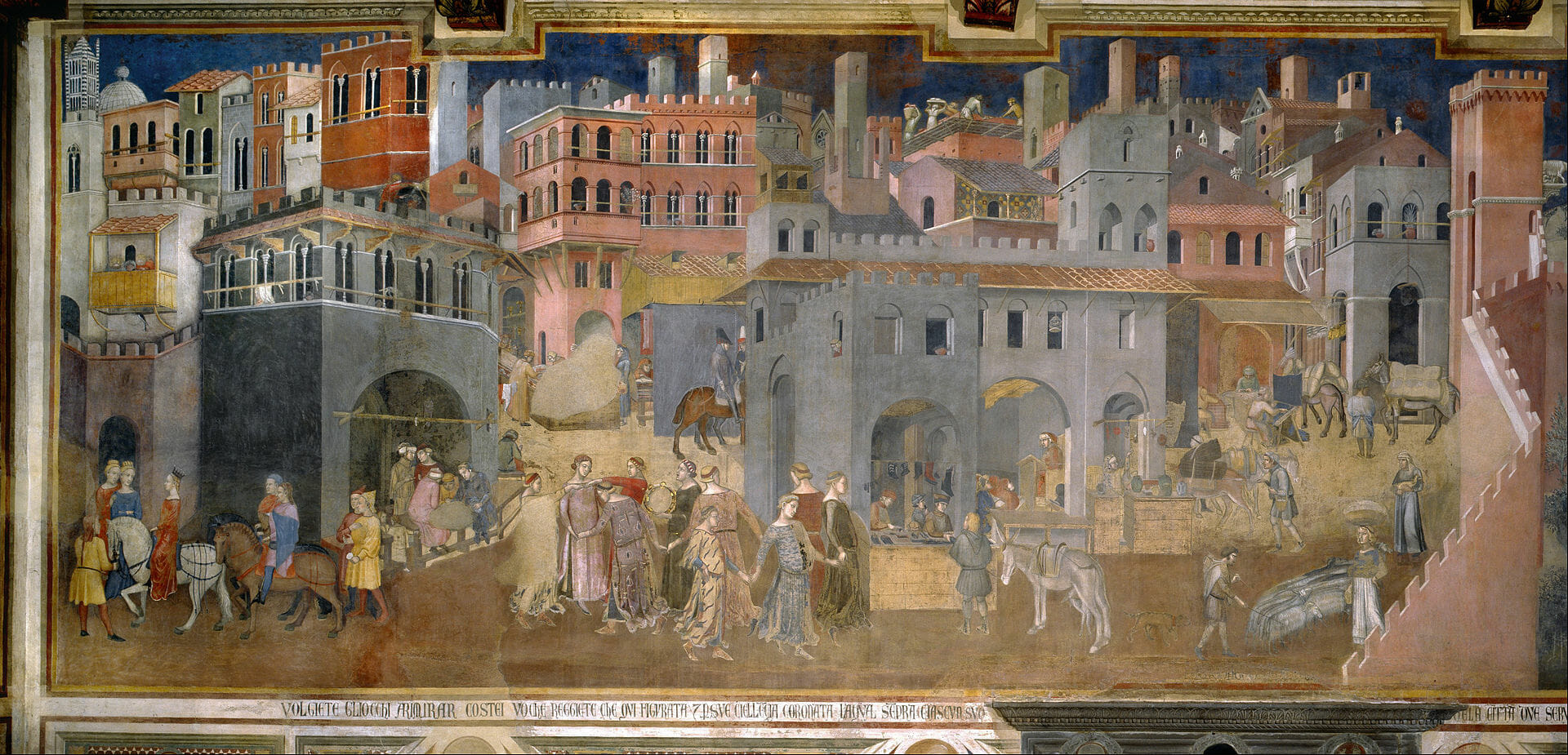
The Majesty of Simone Martini in Siena
Artist
Country
Format
Material/Technique
The entire heavenly court’s glances seem to cross over each other when one goes into the Sala delle Balestre (or the Sala del Mappamondo) inside the Palazzo Pubblico in Siena, beyond an imaginary window as big as the whole wall. The Majesty of Simone Martini records and portrays a quiet conversation between the saints and the Virgin Mary, through scrolls and phrases engraved in gold on marble.
Seeking dialogue with everybody
Over the centuries the phrases have all vanished, apart from two rhyming excerpts. These are sentences that the commissioners wanted Our Lady to address to the audience in person. Italian-speaking visitors will have no problem reading and understanding Mary. In fact, she does not speak Latin, but the everyday Italian of the Sienese people at the beginning of the 14th century. Just this detail alone reveals that this is a very different work from another Majesty. It is the one by Duccio di Buoninsegna, on the central altar of the Cathedral of Siena from 1311 onwards. Duccio had represented a divine court, gilded, distant from the faithful, and put there for the purpose of silent adoration.
In the Majesty of Simone Martini, Mary and the saints talk so that everyone can understand. They seek dialogue and contact with the faithful, but above all, with citizens.
An ethical and political warning
Mary’s words are an ethical, civic, and political warning. Assembled on a throne that appears to be the work of French Gothic goldsmithery, enriched by gold leaf, decorated glass inserts, and pearls, the Virgin addresses two rhymed sentences to her audience.
Simone Martini completed the Majesty by June 1315 but later returned to amend his fresco in 1321. The first sentence is in the lower frame and dates back to 1315. It is a promise of blessing to all citizens, except for those who victimize the weak. This warning is a hidden political declaration of the Rule of the Nine, the oligarchy that governed Siena. In those very years, the Nine had entrusted the Captain of the People with the task of protecting the poor and oppressed. It is his seal which is present at the base of the Majesty.

Admonishing the conspirators
The second sentence that Our Lady pronounces appears on the black step that lies between the two central angels. Here, Mary issues a warning to anybody who acts in their own interests rather than that of the community. These rhymes share some words with Dante Alighieri‘s Divine Comedy. However, they come from the Paradise, a canto that he hadn’t composed yet in 1315. Recent restorations have shown how when Simone Martini returned to add modifications to the work in 1321, he added this second sentence. This further modification had hence political reasons. The Nine claimed it after the Carnaioli Conspiracy broke out in the city in 1318, putting the oligarchy to the test. The rulers brutally put down the conspiracy. Therefore, in apparent recognition of the Nine’s power, the Mother of God admonished the conspirators.
Blue irises and parchment sheets
The work is a Gothic masterpiece in which Simone Martini reinterprets the novelties of Giotto di Bordone and combines them with the Sienese taste, similar to the French style. Among the many fresco innovations, there is the first representation of blue irises in Italian painting history. Then, for the sake of pure realism, Simone inserts real parchment sheets onto the plaster of the fresco for the first time. One is the scroll in the hand of the child Jesus, and the other the book that St. Jerome is writing, represented in the second round of the frame at the bottom left.

Tag
Buy a ☕ for Hypercritic







